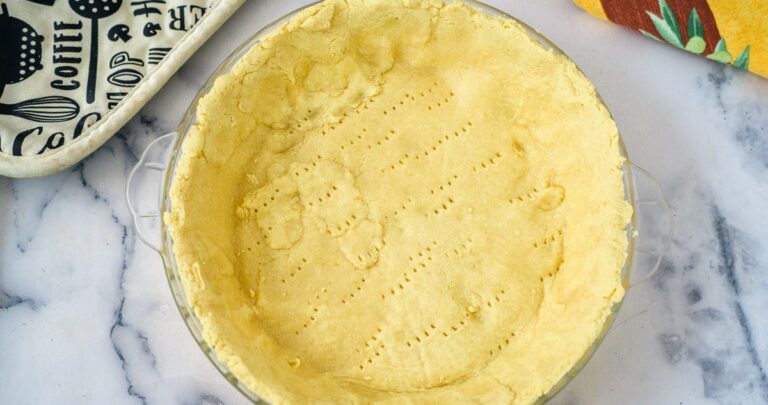Lupin flour is one of the most nutritious flours you can bake with. That's why it's becoming more common in stores every day. It creates a great lower carb alternative to regular flour and it doesn't contain any gluten too.

This post may contain affiliate links. Please read my disclosure policy for more information.
Jump to:
WHAT IS LUPIN FLOUR
Lupin flour is a type of flour made from ground lupin beans. Lupin beans are a legume that is similar to soybeans and peanuts, and they are commonly grown in Mediterranean countries and Australia. Lupin flour is gluten-free and low in carbohydrates, making it a popular alternative to wheat flour for people who are gluten intolerant or following a low-carb diet.
Lupin flour is also high in protein, fiber, and various vitamins and minerals, including potassium, magnesium, and iron. It has a slightly nutty flavor and a light texture, making it a versatile ingredient for a wide range of recipes, including bread, pancakes, and pastries. However, it is important to note that lupin flour may cause allergic reactions in some people, especially those with peanut or soy allergies, so it should be used with caution.
IS LUPIN FLOUR KETO?
Lupin flour is considered a keto-friendly ingredient due to its low carbohydrate content. Here is some nutritional information for lupin flour:
- ¼ cup (30g) of lupin flour contains approximately:
- Calories: 100
- Fat: 3g
- Total Carbohydrates: 4g
- Fiber: 3g
- Net Carbs: 1g
- Protein: 14g
As you can see, lupin flour is low in net carbs and high in protein, making it a good option for people following a keto diet. However, it is important to keep in mind that the nutritional information may vary depending on the brand of lupin flour, so it's always a good idea to check the label before using it in your recipes.
WHY LUPIN FLOUR IS GREAT FOR VEGETARIANS
The high protein content of lupin flour makes this a great flour for keto vegetarians, especially if you are struggling to meet your protein macros.
COOKING WITH LUPIN FLOUR
Here are some tips for cooking with lupin flour:
- Start with small amounts: If you're new to using lupin flour, start by adding small amounts to your recipes and gradually increase the amount as you become more familiar with its properties.
- Combine with other flours: Lupin flour has a slightly nutty flavor and a dense texture, so it's best to combine it with other flours when baking. You can use it in combination with almond flour, coconut flour, or other gluten-free flours to create a blend that works well for your recipes.
- Adjust liquid amounts: Lupin flour is high in protein and fiber, which means it absorbs liquid more than wheat flour. If you're using lupin flour in place of wheat flour in a recipe, you may need to adjust the liquid amount to ensure the consistency of the batter or dough is correct.
- Use in savory dishes: Lupin flour works well in savory dishes like bread, pizza dough, and crackers. Its nutty flavor adds depth to these types of recipes, and it's a great way to add protein and fiber to your meals.
- Store properly: Lupin flour has a shorter shelf life than wheat flour, so it's important to store it in an airtight container in a cool, dry place. You can also store it in the refrigerator or freezer to extend its shelf life.
- Be cautious of allergies: Lupin flour can cause allergic reactions in some people, especially those with peanut or soy allergies. If you or someone you're cooking for has a food allergy, be sure to check with a healthcare professional before using lupin flour in your recipes.
KETO LUPIN FLOUR RECIPES
We are planning to add more recipes to our collection of keto recipes using lupin flour, so book mark this page to return for updates.


















